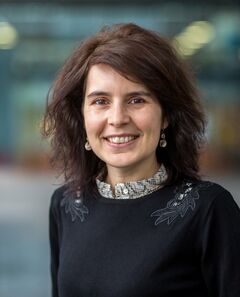
- The University , Research
- 09/11/2018
All nominees for the Gouden KIEM from TU/e
Although the winner will only be announced on the 4th of December at the chemistry congress CHAINS, it is already clear that the Gouden KIEM for the best chemical startup of the year 2018 will go to Eindhoven. All three nominated starters, Lusoco, Sponsh and Vertoro, are initiatives of the TU/e. The winner of the Gouden KIEM will bring home 25,000 euros.
The Golden KIEM has been awarded by NWO and Holland Chemistry (formerly known as Topsector Chemie) since 2014 and is open to participation by all companies in the chemical sector that exist three years or less and have their roots in a university or applied university. The three nominees of this year are all from TU/e Department of Chemical Engineering (CE). In the past years, TU/e start-ups have also won FreshStrips (2017) and TUSTI (2016).
Lusoco
Lusoco B.V. develops inks and components for printing artistic glass that produces energy during the day and emits light at night. Lusoco is an initiative of postdoc Jeroen ter Schiphorst from the group Functional Organic Materials and Devices and Teun Wagenmakers, who was previously involved in the startup PEER +, which developed switchable glass.
The technology used is based on so-called luminescent solar concentrators developed by researcher Michael Debije in the aforementioned group, Ter Schiphorst explains: "We have now developed a printing technique with which we can apply a thin layer of light-sensitive material in a desired pattern."
The material stores solar energy during the day, which it emits at night. This makes the technology suitable for, for example, luminous advertising. "Because of the unique glow effect, you do not need to aim a bulb on it, and all the required energy is therefore generated sustainably." The technology is still in the development phase, but Ter Schiphorst expects to have a salable product within two years.
Sponsh
Researcher Catarina Esteves of Physical Chemistry developed an addition for cotton five years ago, so that material can hold a multiple of its own weight of water. Even in deserts at night if it cools down sufficiently, fog is created and this special cotton can be used to extract water from the air in dry areas. Sponsh B.V. seeks to market Esteves’s technology as a new form of water supply in particularly dry coastal areas, where a square meter of cotton can produce more than a liter of water per night.
Vertoro
The people behind Vertoro B.V. are professor Emiel Hensen from Inorganic Materials Chemistry, PhD student Panos Kouris and Michael Boot, who previously developed at the TU/e CyclOx - an addition for diesel that prevents soot. Vertoro wants to be a platform for crude oil based on lignin, a substance that is extracted from biomass. This lignin oil can - just like crude oil now - not only serve as fuel, but also as a raw material for (bio) plastics and chemicals.

Discussion